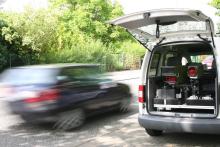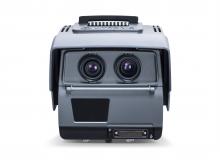An innovative next-generation solution from VITRONIC enables police forces to provide fixed and mobile speed enforcement from a single solution. The 'dual-use' housing system consists of LIDAR (laser-based) technology which captures speeding vehicles on up to three lanes in a single direction. The first of VITRONIC's pioneering system solutions has been sold to the Lithuanian Roads Administration. Consisting of a standard mobile PoliScanspeed enforcement system and a protective housing, both mobile and stat
An innovative next-generation solution from 2879 Vitronic enables police forces to provide fixed and mobile speed enforcement from a single solution. The 'dual-use' housing system consists of LIDAR (laser-based) technology which captures speeding vehicles on up to three lanes in a single direction.
The first of VITRONIC's pioneering system solutions has been sold to the Lithuanian Roads Administration. Consisting of a standard mobile PoliScanspeed enforcement system and a protective housing, both mobile and stationary speed checks can be carried out. The solution for a state-of-the-art system operates in temperatures between -30°C to +45°C.
The mobile components are mounted in the protective stationary housing. When mobile operation is required they can then be easily removed, transferred to a tripod/vehicle and then reinstalled after mobile surveillance is completed.
The core3098 Laser Technology provides a multi-lane, multi-vehicle capacity with lane-specific speed detection. This software provides Automated Licence Plate Recognition (ALPR) and creates documents which are valid in a court of law.
The first of VITRONIC's pioneering system solutions has been sold to the Lithuanian Roads Administration. Consisting of a standard mobile PoliScanspeed enforcement system and a protective housing, both mobile and stationary speed checks can be carried out. The solution for a state-of-the-art system operates in temperatures between -30°C to +45°C.
The mobile components are mounted in the protective stationary housing. When mobile operation is required they can then be easily removed, transferred to a tripod/vehicle and then reinstalled after mobile surveillance is completed.
The core







